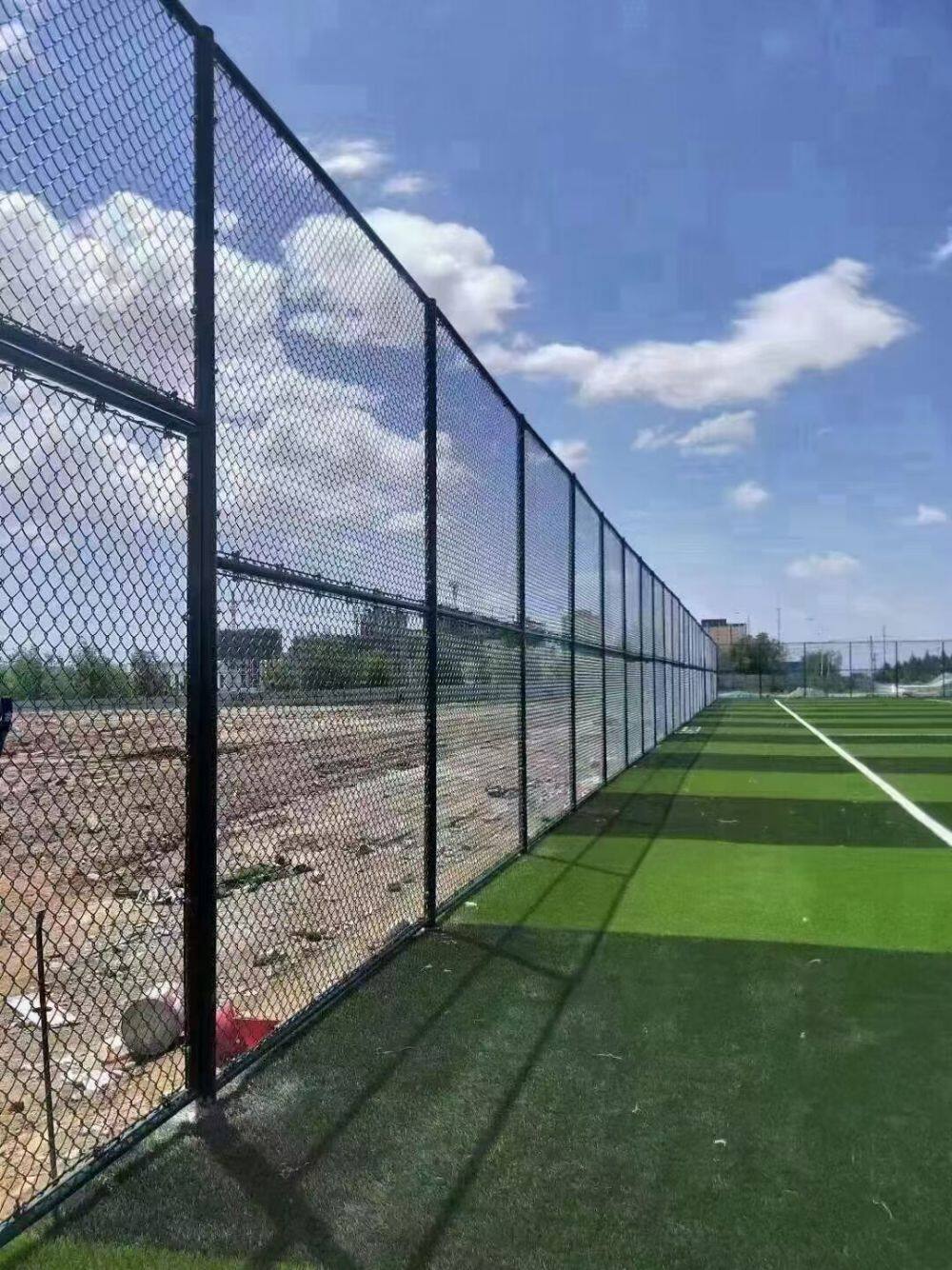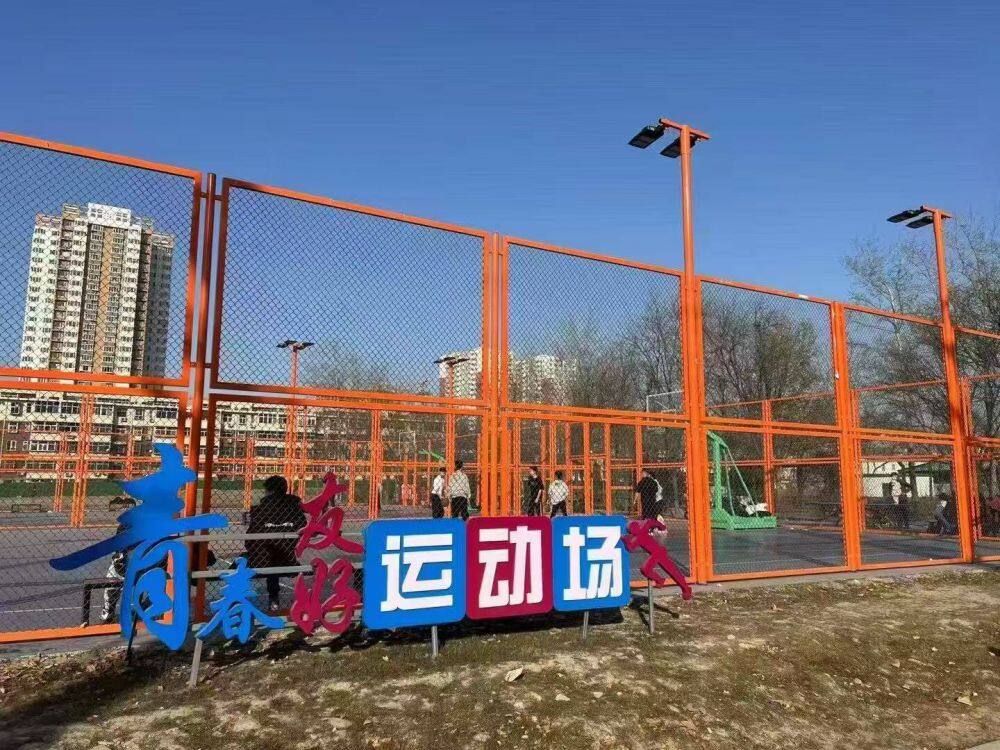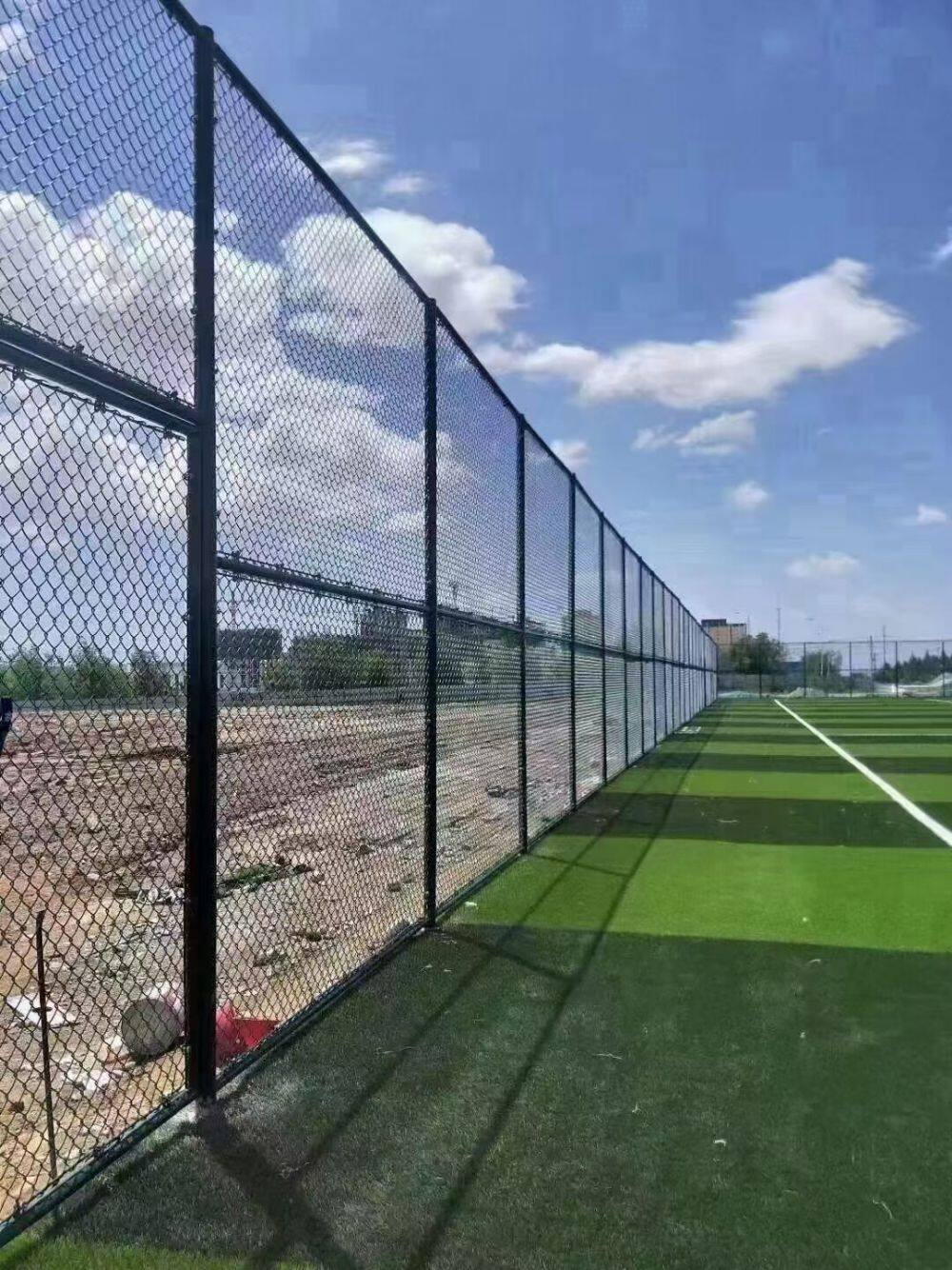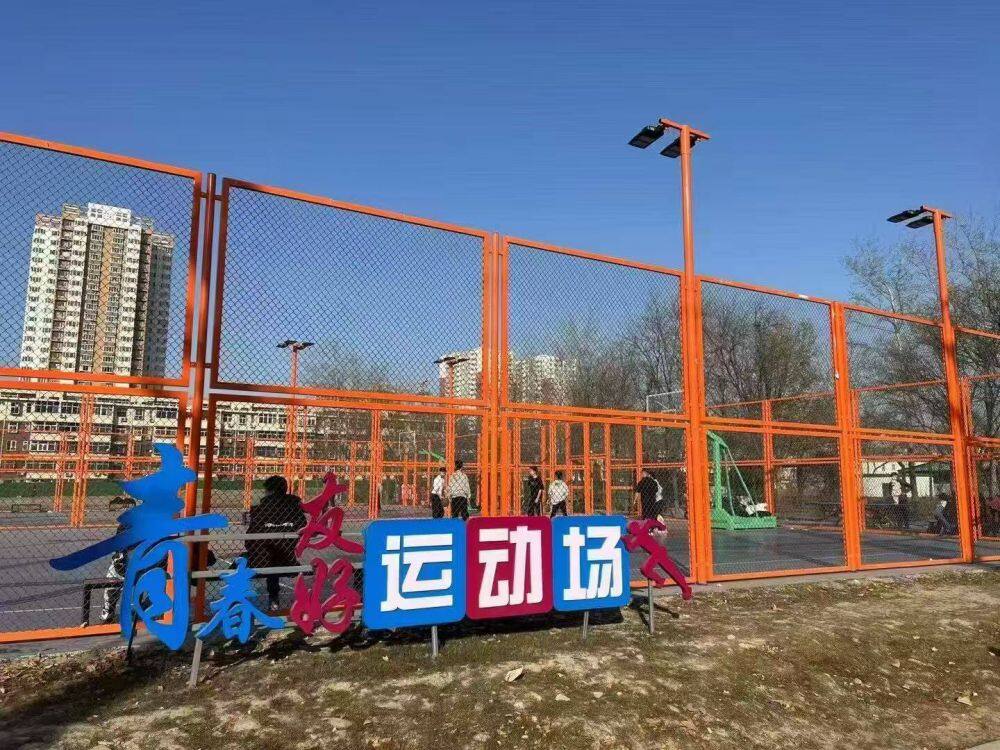-
 Liu
Hi there! Welcome to my shop. Let me know if you have any questions.
Liu
Hi there! Welcome to my shop. Let me know if you have any questions.
Your message has exceeded the limit.

Basketball Court Fence: Choosing the Right Fence for Your Basketball Court
2025-09-13 11:23:41
The fencing is indeed a fine yet often neglected aspect when designing the best basketball court. A good fence infers that apart from functionality, your court will be safe, private, and able to withstand weathering. Whether one is looking to erect a professional court or simply a place for recreation in the backyard, making the right choice in selecting a fence for the home needs to be taken with utmost care. This article will guide you through the key considerations, including materials, height, and design, to help you make an informed decision. By the end of this article, you will understand how to analyze each fencing alternative so that you are confident of choosing the right one to keep your court safe, practical, and appealing.
Understanding Basketball Court Fencing

When it comes to fencing a basketball court, three key factors must be at the forefront: safety, durability, and practicality. Safety is the most critical factor; an ideal fence would be one made of chain-link or mesh, as it prevents injuries and also stops the ball from falling out of the court. The fences must also be durable to survive weather conditions and use-they can be galvanized steel or some other coated material. A practical fence will ensure that the neighboring premises would not be bothered. A height between 10 and 12 feet is considered suitable to avoid interfering with gameplay. Above all, it must suit the particular needs of your court.
Importance of Basketball Court Fencing
The fence for a basketball court provides the ultimate functionality and safety, thus improving the overall playing experience. It contains the ball within the court to avoid unnecessary interruptions while the fence also protects players and spectators. With data from the Google Search Engine, it is evident that most people ask questions about fencing materials and durability, indicating a growing demand for dependable and cost-effective solutions. Fencing ensures that nearby properties are minimally disrupted and receive a professional appearance, particularly in community courts and sports facilities. Proper consideration of fencing, especially where court use dictates the type, can significantly enhance the functionality, longevity, and safety of a basketball court.
Types of Fencing for Sports Courts
1.Chain-Link Fencing
Being durable, cheap, and low-maintenance, chain-link fences are among the most popular ones for sports courts. These fences and gates are made from steel wire interwoven into a mesh and then coated with a weather-resistant material, allowing them to withstand abuse even in harsh climates. They are very flexible, allowing them to suit a wide range of court sizes for sports like tennis, basketball, or soccer. Another name for this style of fencing might be "ivy fencing" due to its open design, which allows for very clear visibility, making it suitable for spectators.
2.Mesh Fencing
Mesh fencing has a more modern appeal, often seen in paddle tennis or indoor soccer. Mesh fences, made of high-tensile fabrics or plastic composites, maintain their stretchability and reduce the risk of injury if a player accidentally comes into contact with one. Apart from this, they are lightweight, install quickly, and allow customization in terms of height and coverage.
3.Wood Fencing
Stained wooden fences are a stunning choice for smaller sports courts or homes. Its natural look establishes a strong connection with the external environment, and one may treat it to withstand environmental elements. However, wooden fences require more maintenance than metal or synthetic ones.
4.Welded Wire Fencing
An industrial-grade option, welded wire fencing, would be when it provides strength and rigidity. The heightened levels of security these fences make are more suitable for those courts in schools or public sports facilities, which have welded steel wires coated with an anti-corrosive coating. This makes them largely vandal-resistant and durable, thus reliable for long-term engagement.
5.Rebound Fencing
When the sports involved are high-impact, such as soccer or cricket, the rebound fencing is designed to absorb the force from the ball and any contact with a player. Built using reinforced materials, this fencing maintains the energy of dynamics in the domain while keeping the ball contained. Its robust construction makes it ideal for courts where durability and performance are essential.
Materials for Basketball Court Fences

Designs of basketball court fences are always oriented toward durability and safety, with only high-quality materials considered for optimal performance. Common fencing materials include galvanized steel, which is not susceptible to rust and corrosion, hence suitable for outdoor installations. Vinyl-coated chain-link fences are also a popular choice, as they provide additional resistance against weather conditions while maintaining a great appearance. In areas where the impact is much higher, welded wire mesh is often preferred; its higher strength practically resists significant forces. From time to time, some walls are made with PVC or composite materials to strike a balance between aesthetics and durability. Such materials are selected based on the climatic conditions and the frequency of use in the environment. Therefore, the materials enable proper containment and support within a basketball court setup.
Chain Link Fencing Advantages
Strength and Durability
Chain-link fences are constructed to sustain heavy usage and the prevailing bad weather in the areas. Galvanized steel is used to make fences that are corrosion-resistant; rust cannot corrode them, thereby guaranteeing long life in an outdoor setting.
Inexpensive
Among other forms of fencing, chain link is very cheap to install. One could use this cheaper alternative to secure large areas, such as basketball courts, parks, and school plays.
Easy Installation and Maintenance
Chain link fence installation is relatively easy, requiring minimal labor and tools. Maintenance is essentially simple: it consists of occasional cleaning and inspection to keep the fence in prime condition.
Visibility and Ventilation
Solid fences block the view and congelate any air movement; chain-link fences do the opposite. It is easy to monitor what goes on inside an area with chain link fences while offering security. The openness allows gas exchange or air circulation, which is highly recommended for outdoor courts and recreational zones.
Custom-made Options
Chain link fences offer a variety of options, including different heights, coatings, and color finishes (such as vinyl coatings), to suit diverse aesthetic tastes and functional considerations. This also allows for a blend in with the setting while remaining out of sight professionally.
PVC Fencing OptionsDue to durability and low maintenance basketing in opportunities for various designs, PVC fencing has been boasting of greater and greater popularity. Usually being made of polyvinyl chloride, this type of fencing can withstand the weather to the fullest, namely rain, sunlight, and wind-this being ideal for both residential and commercial properties. PVC fencing styles can cover picket, privacy, and sometimes semi-private ones-so that buyers can customize their choices to their specific needs. Smooth surface and many color choices increase curb appeal while requiring little cleaning or maintenance over time. Now, with trends on the rise, some consumers also want to see an eco-friendly attribute in their PVC fencing since some manufacturers are creating these fences from recycled materials. If you have been wondering about taking away the guesswork from whether PVC fencing is suitable for your property, consider long-term performance choices and sleek curb appeal as worthy investments.
High-Quality Materials for DurabilityPVC fence is manufactured with advanced materials to withstand the test of time, providing exceptional durability compared to regular fencing options. According to Google trends, a lot of homeowners ask the question, "How long do PVC fences last?" To ascertain this, one has to examine the quality of the material and its making. High-quality PVC fences withstand weathering, UV rays, and moisture without fading, thereby retaining their aesthetic appeal and structural integrity for more than 20 years with little maintenance. This longevity and the improved manufacturing make it an extremely cost-effective option in creating a lasting impression of your property.
Installation of Basketball Court Fencing
The task of installing basketball court fencing demands precision and careful planning to achieve safe, durable, and best-performing conditions. Being the best two materials available in the marketplace, chain-link and PVC-coated mesh are considered ideal for basketball court fencing due to their strength and resistance to weather conditions. In many cases, the fence is built at a height that is somewhere in the range of 10 and 12 feet, mainly to keep the balls inside the play area.
A fence rammed down into concrete is ideal for ensuring that the posts have a firm hold, keeping them safe from any damage that may result due to time. Padding can be placed around posts of the fence to ensure extra safety for the players. Well-installed fencing will therefore offer a safer environment for playing while keeping the boundaries intact, thus forming an essential element in the design and functionality of a court.
DIY Installation vs. Professional HelpSeveral factors come into play when choosing DIY or professional help for installing a court fence, such as budget and expertise, time and effort. DIY can save a few bucks for smaller projects as you do not have to pay for labor. Various guides online, ranging from video tutorials to step-by-step instructions, accessible to fence installation even, were not so much available a while back. It does, however, mean spending time, energy, and precision to guarantee its endurance and safety.
Usually, the execution of one professional guarantees confident handling and results of high quality. Professional installers come equipped with tools and know-how to verify the secure installation of the fence in a safe manner, corresponding to safety standards and local regulations. Moreover, their warranty agreements provide a full sense of security should any problem arise post-installation. Recently, as reported by Google trends, more homeowners and facility managers have been writing off cameria accounts in favor of professional services on bigger scale or high-stakes projects that afford convenience, expertise, and reliability. And finally, the complexity of the project, level of confidence with which you handle the task, and your considerations for cost and quality ultimately decide.
Steps for Proper Fence InstallationEvaluate the Purpose of Your Fence
Before engaging in installation activities, it is essential to weigh the reasons for the installation. Is it for privacy? Security? Or just beauty? All of these considerations affect one's choice pertaining to materials and design.
Learn About the Fence Types and Materials
According to a recent Google Trends report, "best fence materials" and "fence design ideas" seem to be among the most popular questions, showing the increased concern about material longevity, weathering, and visual appeal. Choose materials that suit your climate and needs-wither wood if you want to look good, or vinyl if you want it for low maintenance.
Measure and Plan the Layout
Use exact measurements to map out where to install the fence. Tools such as Google Earth, or other online mapping applications are becoming universally popular, as they allow homeowners to better visualize their property lines and plan fence positioning.
Check Local Regulations and Permits
Check for zoning laws in the locality and restrictions applying to the Homeowner Association (if any). It's often necessary to obtain permission before installation, and overlooking this can land you in court.
Prepare the Site
Clean the site where fencing is to be done. Remove debris, obstacles, and weeds. "DIY fence prep tips" is among the trending searches on Google, meaning people are becoming more interested in clean finishes.
Install Posts and Panels
Dig postholes at evenly spaced intervals. Level the posts, and then set with concrete. Once concrete has set and posts are stable attach panels or boards accordingly. According to Google's trend data for "strong fence installation methods," DIYers are beginning to embrace high-quality fasteners and weatherproof sealants.
Finishing Touches
Apply stains, paints, and protective coatings for extended durability and beauty. According to Google search trends in "fence maintenance tips," it is evident that homeowners want to prolong the life of their investment.
Common Installation Mistakes to AvoidOne of the more popular choices offered to customers relating to fence installation mistakes whereby they consider not checking measurements and planning prior to the project's execution. Searching phrases such as "installation errors in fence" indicate a great number of questions about incorrect measurements generating issues, such as posts that are not even or panels with large gaps. Another common problem includes a failure to consider local building codes and regulations, which can lead to fines or necessitate changes. The negligence of homeowners regarding the securing of the posts is yet another. This is of utmost importance when considering stability; searches on Google for "how to secure fence posts" have sadly been on the rise on preventing such a mistake. Skip applying weatherproofing, such as sealants or protective coatings, and you stand to drastically reduce the lifespan of your fencing. Avoid those common mistakes, and you will ensure the sturdiness and longevity of your fence installation.
Maintenance of Basketball Court Fences
Ensuring proper upkeep of basketball court fences is an essential maintenance procedure to ensure longevity and safety. As per recent data from Google's search engine, one of the general queries is "How to prevent rust on outdoor fences?" while "Best way to maintain chain-link fences" is another widely searched one. The key to addressing these questions revolves around routine inspections coupled with proactive maintenance. Begin by always examining for damage such as bent or broken links and repair right away. In rust prevention, a rust-resistant coating or paint made for outdoor fences is recommended, especially in high-moisture areas. Follow it with cleaning the fences with soapy water from time to time to remove dirt and grime, as this will surely help in extending their lifespan. When taken together with constant maintenance, these measures would allow the basketball court fences to retain good strength and appearance for many years.
Routine Maintenance TipsInspect for Damage Regularly
The fences must be visually inspected for about 2-3 months to see any rusting potentially loose wire, broken links, etc. Early inspection and addressing would prevent further damage and exorbitant repairs.
Apply Rust-Resistant Coating
A rust-resistive coating or paint should be applied once every 1-2 years, especially in areas of high humidity. Such paint will create a barrier between the metal and moisture, thus greatly reducing corrosion chances.
Cleaning With Soap and Water
Fences must be cleaned twice a year with warm soapy water and a soft brush to get rid of dirt, grit, and salt deposits. Cleaning will ensure the fence remains pleasing to the eye while sanding scratches from stubborn debris.
Tighten Fasteners and Connections
Check and tighten bolts, screws, or clips holding the fencing structure together. Loose connections can weaken the fence's stability and increase the risk of damage during adverse weather.
Trim Surrounding Vegetation
Make sure that the nearby shrubs, trees, and plants are well-trimmed and do not grow directly against the fence. Overgrown vegetation could trap moisture, which can promote rusting and eventual damage. It is best to keep close watch and trim every few months.
Repairing Damage to Your FenceWhen your fence gets damaged, keeping it in shape requires timely repairs. Begin by thoroughly examining the fence, noting those areas that are visibly damaged: broken boards, bent panels, parts with rust, and so on. A wooden fence calls for the replacement of any damaged boards with like materials, and fastening them securely. With steel or aluminum fences, sanding and repainting may be necessary to keep rust and corrosion at bay.
If the fence consists of vinyl parts, fixing cracks or holes can be done with a vinyl patch kit. Otherwise, the heavily damaged sections could be wholly replaced. Ensure all repairs are weatherproof so that they endure longer.
The latest data collected by Google goes on to state that regular maintenance of fences with timely repairs drastically cuts down on replacement costs and frequency. Searches made on "how to repair fences" point towards the fact that homeowners rate step-by-step manuals and practical tips very highly, so putting time into learning how to do it can actually save you money and energy.
Long-Term Care for Chain Link and PVC FencesThe maintenance and care procedures should be adequate to assure a lasting period for chain link and PVC fences. One way in which chain link fencing can be maintained is by regular cleaning to curb rust and corrosion due to dirt and moisture accumulation. The application of a rust-proof coating can highly serve as a protection to the metal. PVC fences, however, are rust-proof; cheaper maintenance is enough for them to keep them clean from dirt once in a while. Soap and water will do the job well-there is just one thing to avoid they are adverse staining and discoloration caused by environmental factors. From the latest data generated from Google's search engine, many users tend to ask how to maintain the beauty of their fences. Maintenance is the key: pressure washing or gentle scrubbing keeps chain link and PVC fences shining. Inspection for damages or weaknesses should also be considered on a regular basis since this can prevent costly repairs later on. By following these procedures, homeowners and landowners can get the utmost lifespan for their fences while keeping them attractive at all times.
Frequently Asked Questions (FAQ)Why does fencing surround a basketball court?Fencing ensures ball containment, so the ball does not roll away from the court during practice sessions or games. It also acts as a safety barrier, protecting players and spectators from stray balls. The fencing around a basketball court can also mark the perimeter of the play area so that the court remains distinct from other surrounding areas, such as a backyard sports court or soccer field.
What are the best materials for basketball court fencing?For fencing basketball courts, highly durable materials such as steel bar, chain link, or PVC are always recommended. These guarantee protection against the elements and provide a lasting solution for the commercial as well as a residential installation. Choosing the best materials also improves the look of a court while enhancing its safety as well as functionality.
How does fencing maximize safety on a basketball court?Fencing maximizes safety on a basketball court by creating a safe environment for players and spectators. It prevents injuries from balls escaping the playing area and players colliding with the surrounding areas. High fencing can improve protection even more, especially when it comes to outdoor basketball courts with spectators.
What is the standard height for basketball court fencing?Standard height for basketball court fences tends to be between 8 and 10 feet, sufficient to keep balls in while still offering plenty of visibility. However, some installations may go higher, plus other factors like safety and containment would be the reason for opting for more height.
Can one purposely build fencing around a basketball court?Depending upon your tools and skills, installing fencing around a basketball court could be a DIY project. An efficient layout design is essential, and the right materials must be selected to ensure durability and functionality. Those with less experience should probably consider hiring a professional fencing installation pro to ensure quality work.
What kinds of fencing exist for basketball courts?Several different fencing options are available for basketball courts, including chain-link fence, vinyl fencing, and mesh panels. Chain link fences are located somewhere between cheap and tough; vinyl fences, however, are a nice alternative to consider. Each comes with its pros and cons, which may be factored in with respect to the specific needs of the court, such as security, aesthetics, and budget.
How does the court ensure ball containment?Ball containment, in relation to the court, refers to the ability of the fence to keep the ball within the confines of the play area. This is vital so the flow of the game is maintained and players can solely focus on their performance without interruptions. Efficient ball containment is achieved by selecting the correct height and design of the fence that prevents balls from entering associated human spaces.
What are the merits of basketball court fencing installation?Basketball court fencing provides a range of benefits, including enhanced safety, effective ball containment, and improved aesthetics. Additionally, basketball fencing can separate the court from the surroundings, allowing football players to practice without any distractions. Also, basketball fencing can improve the value of your property and give an aesthetically organized look to the outdoor space meant for recreational activities.
Are there differences in the fencing of a basketball court and a volleyball court?Yes, there are differences between fencing designed for basketball courts and volleyball courts. Fencing for basketball courts usually requires more height to accommodate the basketball's trajectory, whereas volleyball court fencing is more concerned about ball containment at a lower height. Depending on the specific requirements of each sport, including net placement and spectator safety considerations, the design and materials may also differ.
Tags: Basketball Court Fence

